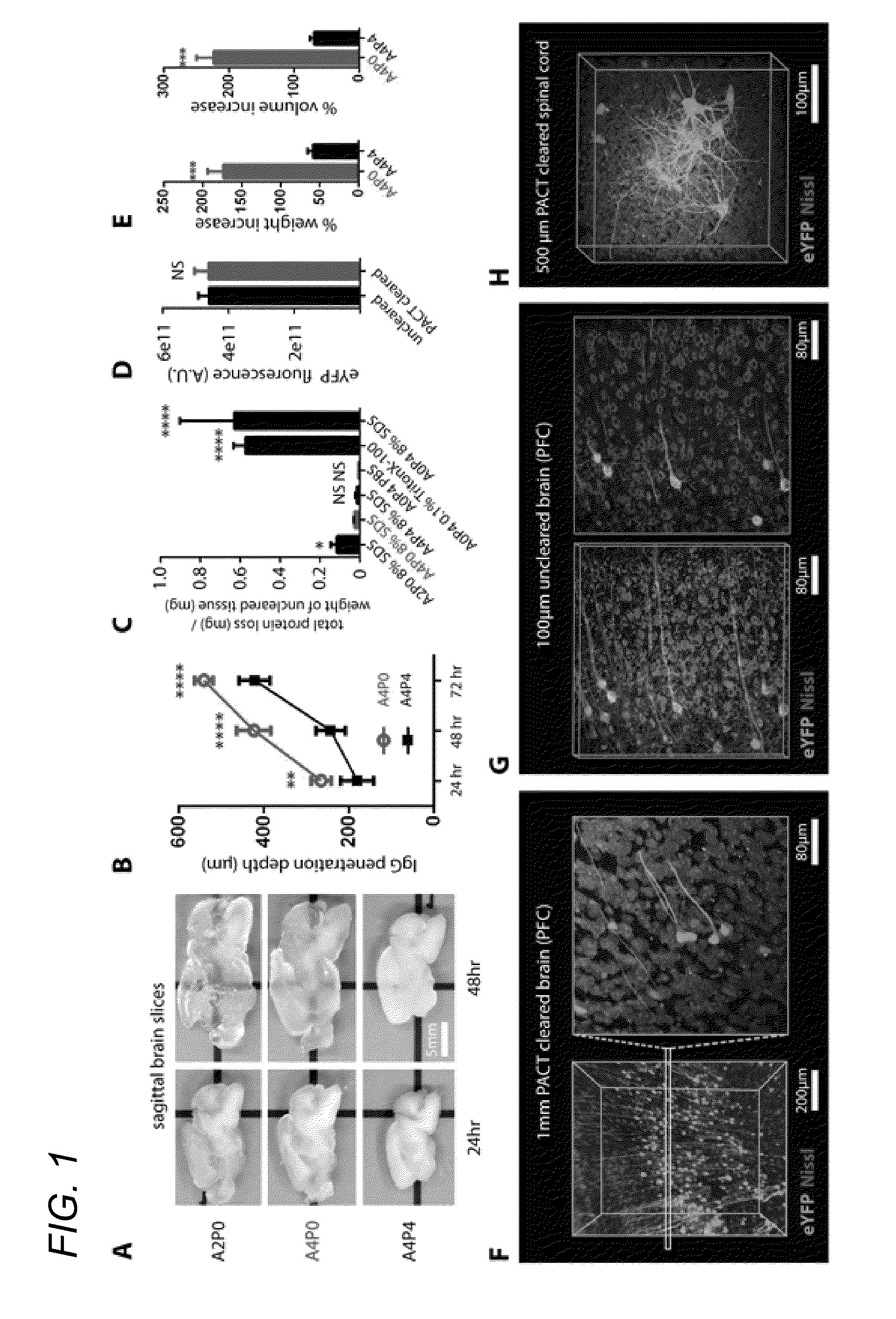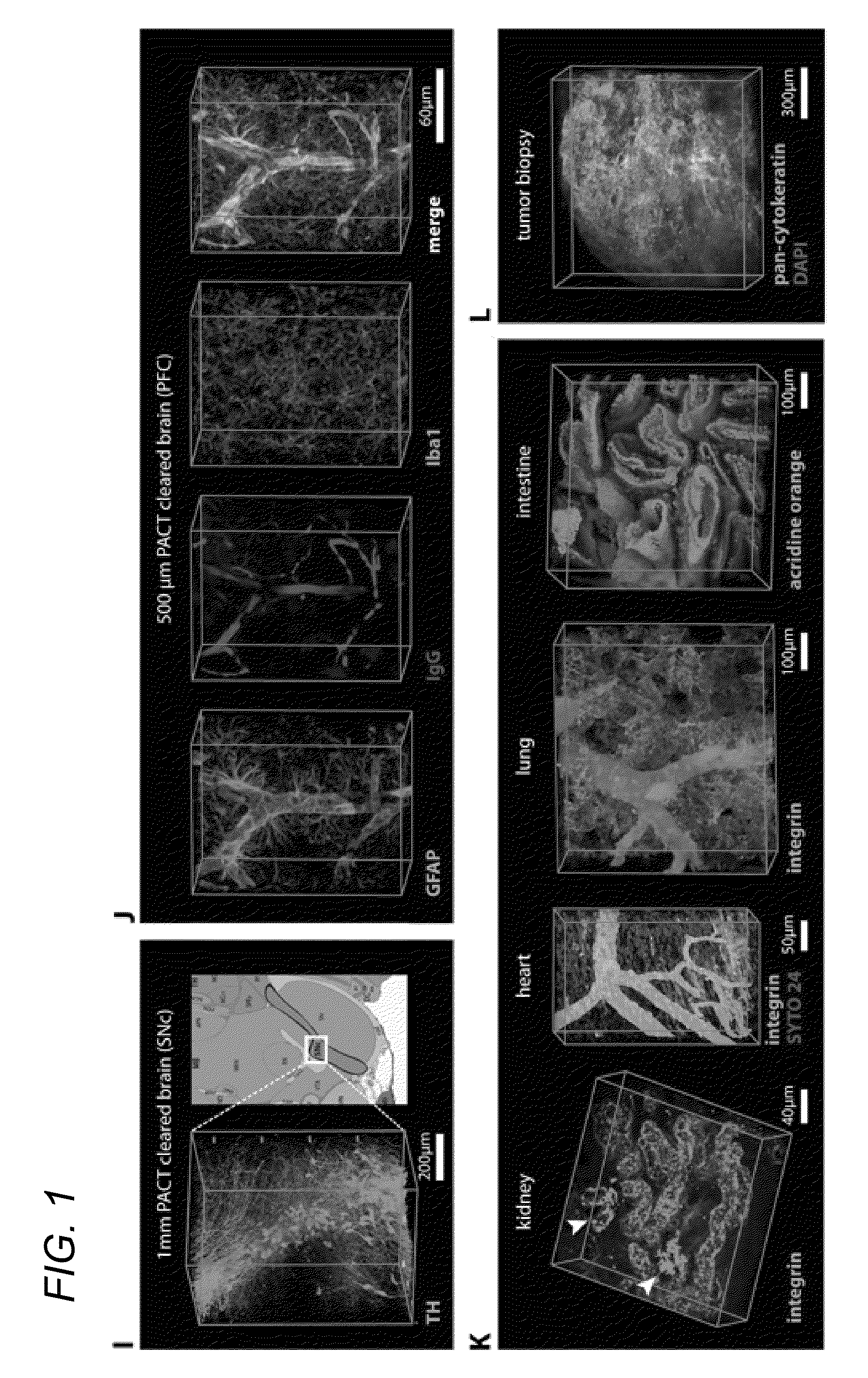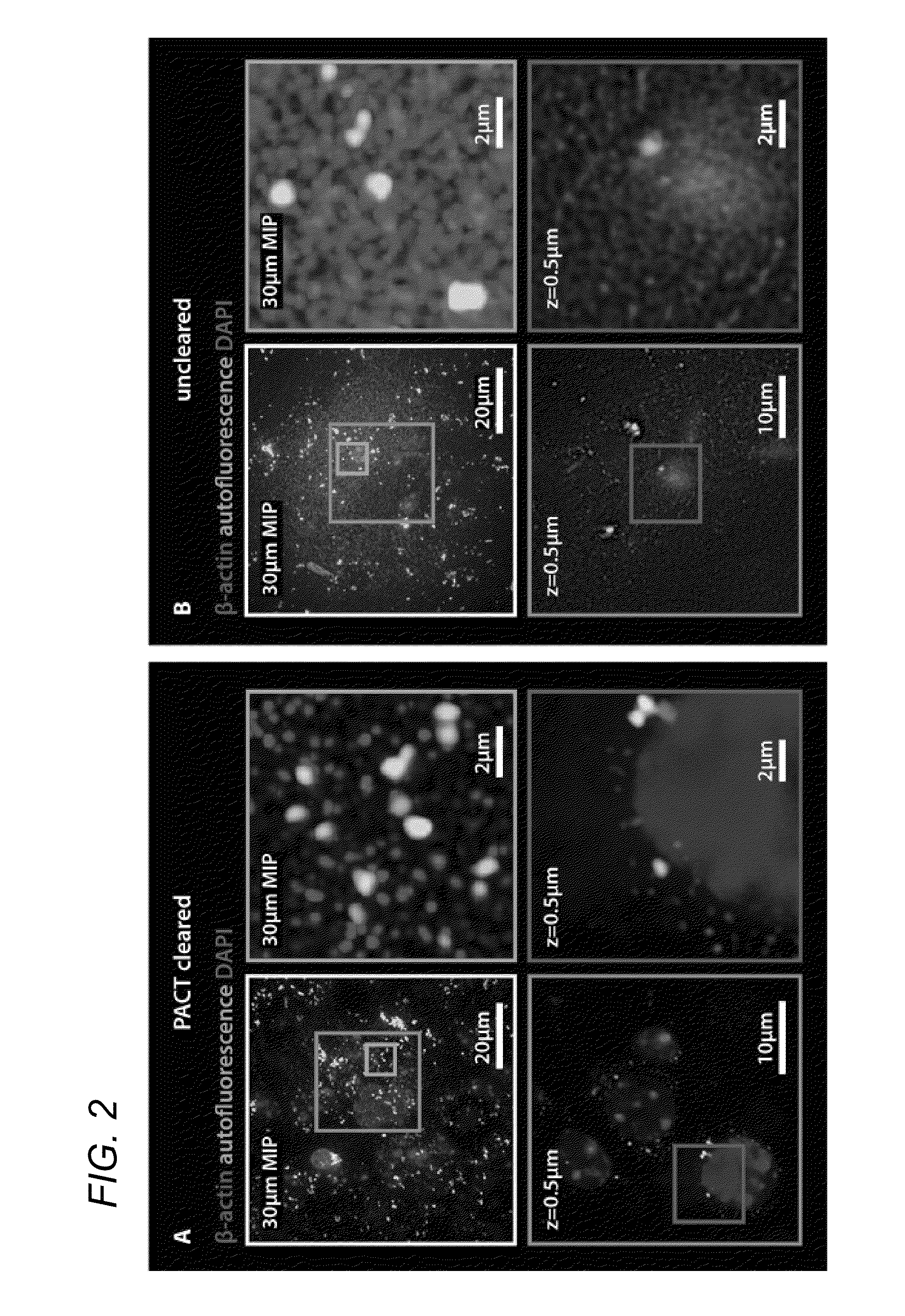Methods for phenotyping of intact whole tissues
a whole tissue and tissue phenotyping technology, applied in the field of tissue preparation and characterization, can solve the problem of lack of a whole-organ imaging method
- Summary
- Abstract
- Description
- Claims
- Application Information
AI Technical Summary
Benefits of technology
Problems solved by technology
Method used
Image
Examples
example 1
Results
Method for Passive Clearing and Immunostaining of Whole Organs
[0052]In some embodiments, thick tissue is rendered optically transparent for imaging in three main steps. First, tissue is cross-linked and hybridized to hydrogel monomers to stabilize biomacromolecules. Second, tissue lipids are extracted from the tissue-hydrogel matrix with ionic detergent(s). Third, cleared tissue is embedded in RIMS for imaging, or for long-term storage. Although wholebody clearing was the primary goal, it was recognized that the processing of small or particularly fragile specimens and organs would best be accomplished by a mild, passive clearing protocol. PACT was developed for rendering rodent whole organs, their 1-3 mm thick sections, including brain, spinal cord, kidney, heart, lung, and intestine, or human tissue biopsies transparent. The clearing speed depends in part on the rate of lipid solvation by detergent micelles, and the rate of diffusion of detergent micelles in tissue (Hoffman...
example 2
Discussion
[0066]In some embodiments, the invention teaches PARS, a method that renders intact whole-organisms transparent for imaging with single cell resolution while preserving fluorescent and protein-based signals and tissue architecture. The starting point, the CLARITY method (Chung et al., 2013) provided scientists with a brain-processing platform for elucidating the 3D cellular arrangement and connectome in toto. Numerous laboratories have previously reported on new clearing reagents in the decade before CLARITY, however many of these reagents were highly application- or tissue-specific (summarized in Table 1). In contrast, CLARITY introduced two broadly applicable techniques pertaining to tissue preservation (hydrogel embedding) and clearing efficiency (electrophoretic tissue clearing, ETC), both of which could be incorporated into the design, or redesign, of other clearing procedures.
[0067]Traditionally, making tissue transparent was a process that demanded solvent incubatio...
example 3
Methods
PACT Clearing
[0085]4% paraformaldehyde (PFA)-fixed tissue sections were incubated at 4° C. overnight in the hydrogel monomer solution A4P0 (4% acrylamide in PBS) supplemented with 0.25% photoinitiator 2,2′-Azobis[2-(2-imidazolin-2-yl)propane]dihydrochloride (VA-044, Wako Chemicals USA, Inc.). A4P0-infused samples were degassed with nitrogen for 1-5 minutes and then incubated for 2-3 hours at 37° C. to initiate tissue-hydrogel hybridization. After removing excess hydrogel via brief PBS washes, tissue-hydrogel matrices were transferred into 50 mL conical tubes containing 8% SDS in 0.1M PBS (pH 7.5), and depending on tissue size, were incubated for 2-5 days at 37° C. with shaking. For immunostaining, 1-3 mm thick PACT-processed samples were washed in PBS with 4-5 buffer changes over the course of a day and then transferred to buffer containing small-molecule dyes or primary antibodies followed by fluorescently-conjugated secondary antibody (1:200-400, in PBS containing 2% normal...
PUM
| Property | Measurement | Unit |
|---|---|---|
| depth | aaaaa | aaaaa |
| imaging stack depth | aaaaa | aaaaa |
| depth | aaaaa | aaaaa |
Abstract
Description
Claims
Application Information
 Login to View More
Login to View More - R&D
- Intellectual Property
- Life Sciences
- Materials
- Tech Scout
- Unparalleled Data Quality
- Higher Quality Content
- 60% Fewer Hallucinations
Browse by: Latest US Patents, China's latest patents, Technical Efficacy Thesaurus, Application Domain, Technology Topic, Popular Technical Reports.
© 2025 PatSnap. All rights reserved.Legal|Privacy policy|Modern Slavery Act Transparency Statement|Sitemap|About US| Contact US: help@patsnap.com



